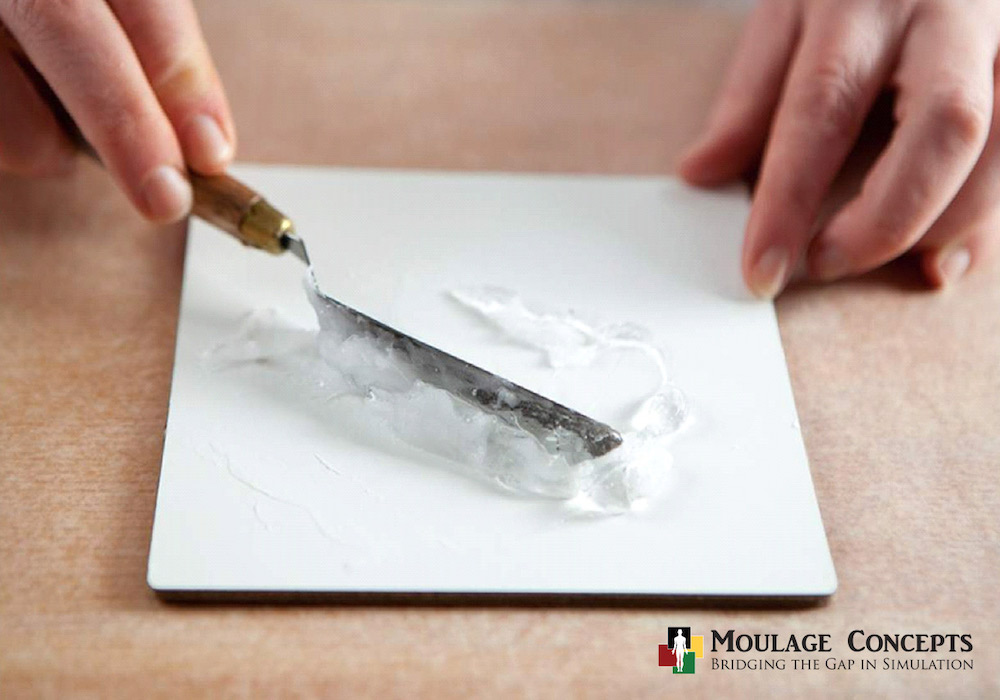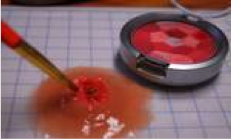Another great article by Bobbie Merica from MoulageConcepts.com takes us through the secret recipe for secretions!
Add more realism to your simulations today by reading this article!
How good are you at pretending; at engaging and play acting? If I was to describe a diabetic foot ulcer with a thick purulent drainage, or C-diff, could you see it in your mind? Would you instinctively wrinkle your nose in remembrance of the odor that you will probably never forget…….. Are you at this moment wishing I hadn’t brought it up?
If you had never experienced these two maladies and I asked you to pretend in your scenario that your patient had them, could you do it? Really?
When I began my moulage career, it was considered ground breaking to cover a simulator with chocolate frosting and instruct the nursing students to assist the patient who had just soiled himself; while providing professional care and maintaining modesty. Certainly, the shock value was priceless, and yes, it was progressive. But, let’s be honest, chocolate frosting smells like, well, chocolate frosting.
Every simulation session must have enough realism for the participants to become fully engaged in the scenario. They must believe and act as if the patient simulator is someone for whom they are responsible and must provide appropriate care. Having a mannequin that blinks and speaks is wonderful, but for many participants that is not enough to overcome the sense of playacting.
Simulated Realism: Essential, Desired, Overkill – Judith C.F. Hwang, Betsy Bencken
Those who have followed me for a while have heard me discuss the importance of moulage to the simulation scenario. Why is it so important, you ask? Nursing is a sensory experience. While you can read about disease processes in books and study symptoms in theory, you cannot fully understand that which you do not know or experience…….. It is the interpretation of what is seen, felt, heard, and smelled that allows the student to pull together critical data and integrate this knowledge into their assessment and care plan, more importantly, it sears the knowledge into the brain, allowing them to recall the data for many years following the actual event. (How many of you are still recalling the C-diff mentioned above?)
A true story: A few years ago I was contacted by a nursing instructor with a very specific issue. She had a student who had been sent into a patient’s room to provide basic care to an elderly, sharp as a whip, incontinent patient, with C-diff. Her student, who was poised, professional, and confident, dry-heaved uncontrollably for the first five minutes; unable to regain her composure. Finally, the nurse in an attempt to elevate the obvious discomfort of the patient relieved the student of her duties and sent her out of the room. The instructor shared it was a difficult experience for all involved.
RSV secretions
.
Environmental Settings:
1 Tbsp. KY jelly
½ Tbsp. water
½ tsp. baby powder
In a small bowl, combine KY jelly, water, and baby powder. Using a fork or utensil, stir mixture approximately 1 minute until smooth or baby powder is fully incorporated. Using a spatula; fill barrel of a 20 cc syringe applicator with RSV secretion mixture.
Environmental Settings:
Place the tip of the syringe at the base of the nostrils of a newborn or infant simulator. Apply slight pressure to the syringe plunger, expressing the RSV mixture in the lower half of the nostrils and pooling on the philtrum. Using a pillow, elevate the head and upper back of the simulator, allowing gravity to create a “flow” of the RSV secretions. Add a small amount of RSV secretions to wadded tissues and front of infant’s clothing.
Use in conjunction with circumoral cyanosis, and crusty eyes. See: Circumoral cyanosis and crusty eye recipe.
Clean Up:
Using a soft rag or paper towel; remove RSV secretions from nostrils, philtrum and lips of simulator. Use a clean cotton swab to clean the lower nares and remove remnants of RSV mixture from the nose of the simulator. Treated infant clothing and tissues (contents dried) can be stored together in Moulage box or bag for future use. RSV mixture can be reused indefinitely.
Time Saving Hint:
RSV mixture can be made ahead, stored in prefilled syringes and stored in the refrigerator or moulage box indefinitely.
I hope this helps you with your Healthcare Simulation Moulage! Please stop by and say hello at www.moulageconcepts.com, where you can learn more about “Bridging the Gap” in simulation.
Wishing you great success in all your Moulage endeavors.
Bobbie Merica, Author/Business Owner
Simulation Coordinator/Consultant
This article is referenced from Moulage-Bridging the Gap in Simulation TM, book on CD and is, unless otherwise stated, the property of Moulage Concepts. Copyright and other intellectual property laws protect these materials. Reproduction or retransmission of the materials, in whole or in part, in any manner, without the prior written consent of the copyright holder, is a violation of copyright law.









